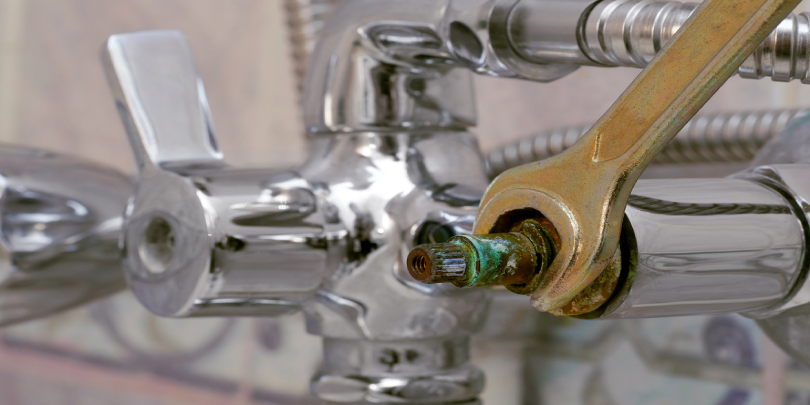
Understanding Your Sink Faucet Can Be a Lifesaver When Leaks Arise
Most property owners seldom think about the sink faucets they rely on daily. Some may want a bathroom faucet to match a certain aesthetic or a detachable kitchen faucet to assist with washing dishes. However, for the most part, very little time is spent contemplating the options and styles of faucets available on the market.
However, the type of faucets you use will become quite important if you ever encounter a leak or malfunction and need a repair. At Mr. Rooter Plumbing of Southeast Georgia, we have the tools, experience, and techniques to fix, install, replace, and repair any type of faucet. If you need an upgrade, we can ensure your new faucet matches your plumbing arrangement, practical needs, and aesthetic desires.
Knowing how to differentiate between the four primary types of faucets can go a long way in helping you determine:
- Your preferred faucet styles
- What faucet issues you can expect to encounter
- What repair methods will likely fix your leaky faucet
- What faucet replacements are compatible with your assembly
Cartridge Faucets
Cartridge faucets rely on a metal cartridge to control the water flow. Unlike other faucet styles, they do not need washers or rotating balls to control water flow and temperature. Simply open or turn the faucet handle, and the cartridge will move, allowing water to dispense.
Cartridge faucets can have one or two handles. When it comes to single-handle cartridge faucets, the handle must be moved up and down to turn the water on and off. To control the temperature, the handle moves from side to side (like disc faucets).
Operating a cartridge faucet is simple. However, a faucet cartridge can become clogged with hard water deposits and mineral buildup over time. Because it is nested deep in the faucet, it can be hard to retrieve and clean. Difficult to access or not, we recommend flushing and unclogging your cartridge regularly to avoid experiencing leaks and low water pressure.
Compression Faucets
Compression faucets are a classic, timeless style. They use rubber O-ring washers to create a watertight seal and rely on adjustable, rotating handles to release hot and cold water. To let water flow, simply untighten the handle by spinning it counterclockwise. To turn off the water, tighten the handle clockwise.
The handle of a compression faucet connects to a stem assembly. This assembly is essential a screw with a washer at the end. As the faucet tightens, the assembly lowers toward the valve seat, forcing the washer to compress, seal, and prevent the water flow.
Signs of failed compressions faucets include:
- Handles that won’t spin
- Water dripping from the spout
- Inconsistent water temperature
- Inadequate hot water
There are many methods for fixing a compression faucet leak. Each problem is unique. In most scenarios, repairs are easy:
- Unscrew the washer beneath the handle stem
- Replace it with a matching O-ring
- Coat it in plumbing grease to protect it
Ball Faucets
Ball faucets are very similar to compression faucets. However, they rely on a rotating ball with a hole in the center instead of washers or a cartridge. This ball, which controls the flow of water, is also known as the lever ball assembly. It is almost always located within the faucet’s housing.
With ball faucets, a single handle is all that’s needed to control both hot and cold water. Because ball faucet handles rotate up and down and from side to side, they’re easy to operate. The ball has slots and chambers connected to the water supply line. Moving the handle will cause these slots to align and/or block different passages, allowing water to flow freely or shut off.
Sometimes, the adjusting ring inside the ball faucet can become loose. If this happens, there are two primary repairs:
- Tighten the adjusting ring with needle-nose pliers.
- If tightening doesn’t work, remove the ring with your needle-nose pliers and install a replacement.
Disc Faucets
Disc faucets are the latest style. Like ball faucets, they consist of a single-lever handle that rotates in every direction. Disc faucets house two ceramic discs inside the body. The lower disc is fixed in place while the upper disc rotates with the handle. As the upper disc moves away from the lower disc, a space is created, allowing water to flow. When the upper disc and lower disc seal together, water is blocked off.
Many interior designers and property owners love their sleek design and durability. However, the discs can sometimes wear out and cause issues with leaking.
Some disc faucet issues include:
- Faulty disc cartridges
- Broken seals or clogged ports
- Defective spout O-rings
- Assembly errors
Sick of Dealing with a Leaky Faucet? Call A Plumbing Specialist
Knowing what type of faucets are in your home can help expedite the repair process – especially if you take the DIY approach. Don’t hesitate to reach out to one of the pros at Mr. Rooter Plumbing of Southeast Georgia if you need help finding replacement parts or determining what faucet style you’re working with. We can assist with any plumbing project and fix your faucet for you at a cost-effective price.
Need plumbing help? Call for a complimentary consultation today!

